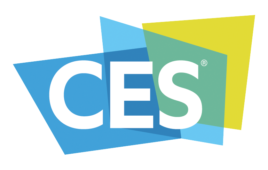
[DARPA image from Wake Forest Baptist Medical Center]
DARPA has been working on restoring normal memory function in military personnel since 2013 in a program known as Restoring Active Memory (RAM). They’re getting real-world results in actual patients.
Researchers from Wake Forest Baptist Medical Center and the University of Southern California implemented a proof-of-concept system that restored memory function by up to 37% improvement in short-term, working memory on baseline levels.
“DARPA’s cumulative investments in neurotechnology over the past two decades have brought us to an extremely exciting point today where we’re testing tangible technologies that have the potential to alleviate some of the worst effects of brain injury and illness,” said Justin Sanchez, the director of DARPA’s Biological Technologies Office and the program manager for RAM, in a press release.
The researchers on RAM focused on episodic memory which includes the short-term memory needed to remember where a car is, what someone had for dinner the night before or when they last took medication. Episodic memory loss is one of the most common types of memory loss in people who experience brain injury and Alzheimer’s disease.
The researchers focused on the hippocampus area of the brain, which is the area of the brain responsible for memory, to improve episodic memory. The hippocampus has sub-regions known as CA3 and CA1 that work together to support memory encoding and retrieval. When the brain wants to encode something as a memory, neurons are fired in the CA3 region, which inputs information into the hippocampus, and then neural activity occurs in the CA1 region which marks output from the hippocampus.
Epilepsy patients had electrodes surgically implanted in the CA3 and CA1 regions during the study to record neuronal activity. The participants then performed a visual memory test where they were shown an image like a color block and, after a brief delay, were asked to identify the image out of four to five other images.
As a result, the researchers could create a multi-input multi-output (MIMO) nonlinear, mathematical, spatiotemporal model to predict the transformation of neuronal firing patterns in the CA3 region into CA1 region firing patterns. The codes created by the model matched the CA1 firing patterns that happen when CA3 encodes information correctly, which corrects natural errors in the transformations between CA3 and CA1 firing patterns.
After the researchers created the firing pattern model, they performed another image-recall test on the volunteers using patterned, spatiotemporal electrical stimulation of CA1 to play back MIMO-based codes that were obtained from neuronal activity in CA3. The volunteers had an average of 37% improvement in episodic memory performance.
The researchers then tested their system to see if it would have a similar effect on long-term memory. The new test had highly-distinctive photographic images and the volunteers were asked to identify the photos out of a set of photos after a short delay.
Volunteers were also shown a set of three images after a 75-minute delay and were asked to identify the original photo from a set of four to five photos. The volunteers were stimulated with the correct spatiotemporal codes and had a 35% improvement in memory.
Stimulation did not replace CA1 activity in the brains during the study. Instead, the neural activity was supplemented by the stimulation.
“We’re closing in on our goal of an implantable, closed-loop memory prosthesis,” Sanchez said. “The RAM program continues to achieve and integrate amazing breakthroughs in neuroscience, artificial intelligence, and neural interface device development for clinical use, which makes me confident DARPA can ultimately deliver our Service members and veterans powerful technologies for countering memory loss.”
The research was published in the Journal of Neural Engineering.




